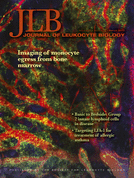- Submit a Protocol
- Receive Our Alerts
- Log in
- /
- Sign up
- My Bio Page
- Edit My Profile
- Change Password
- Log Out
- EN
- EN - English
- CN - 中文
- Protocols
- Articles and Issues
- For Authors
- About
- Become a Reviewer
- EN - English
- CN - 中文
- Home
- Protocols
- Articles and Issues
- For Authors
- About
- Become a Reviewer
Isolation of Genomic DNA from Mycobacterium Species
(*contributed equally to this work) Published: Vol 6, Iss 5, Mar 5, 2016 DOI: 10.21769/BioProtoc.1751 Views: 16682
Reviewed by: Ivan ZanoniRamalingam BethunaickanBenoit Chassaing

Protocol Collections
Comprehensive collections of detailed, peer-reviewed protocols focusing on specific topics
Related protocols
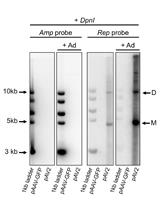
Analysis of Replicative Intermediates of Adeno-associated Virus through Hirt Extraction and Southern Blotting
Martino Bardelli [...] Els Henckaerts
May 5, 2017 9928 Views
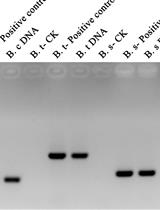
A Quick DNA Extraction Method for High Throughput Screening in Gram-positive Bacteria
Nuo Chen and Xiaoming Yuan
Apr 20, 2023 2125 Views
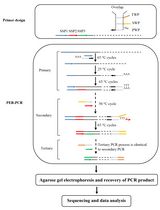
Protocol to Mine Unknown Flanking DNA Using PER-PCR for Genome Walking
Zhou Yu [...] Haixing Li
Feb 20, 2025 973 Views
Abstract
Isolation of genomic DNA from Mycobacterium species has been a tedious procedure. This can primarily be attributed to thick and waxy cell wall of mycobacteria which hampers lysis of the bacterial cell. We have tested various approaches to isolate mycobacterial DNA and based on this, an optimized protocol is presented here. This protocol involves initial incubation of mycobacteria with lysozyme, followed by SDS-proteinase K treatment to bring about cell disruption. In the case of slowly growing mycobacteria such as BCG (Bacillus Calmette–Guérin) or Mycobacterium tuberculosis (M. tuberculosis), an intermediate step of cell lysis by physical method results in significantly enhanced yield.
Materials and Reagents
- Mycobacterium culture (50 to 100 ml)
- Tris base (Sigma-Aldrich, catalog number: T1503 )
- EDTA (HiMedia Laboratories, catalog number: MB011 )
Note: Prepare 0.5 M solution (pH 8) in double distilled water.
- Liquid nitrogen
- Proteinase K (HiMedia Laboratories, catalog number: RM2957 )
Note: Prepare the stock solution of 10 mg/ml in TE buffer (pH 8).
- SDS (Bio Basic Canada, catalog number: SB0485 )
Note: Prepare 10% solution by dissolving in double distilled water.
- Lysozyme (Sigma-Aldrich, catalog number: L6876 )
Note: Prepare the stock solution of 100 mg/ml in double distilled water.
- Phenol (Sigma-Aldrich, catalog number: P4557 )
Note: Equilibrate with Tris-Hcl (pH 8).
- Chloroform (HiMedia Laboratories, catalog number: AS041 )
- Isoamyl alcohol (HiMedia Laboratories, catalog number: MB091 )
- 2-Propanol (HiMedia Laboratories, catalog number: MB063 )
- Ethyl alcohol, Pure (Sigma-Aldrich, catalog number: 459844 )
- Nuclease-free water (HiMedia Laboratories, catalog number: TCL016 )
- TE buffer (see Recipes)
- PCI mixture (see Recipes)
Equipment
- Water bath
- Centrifuge
- Pestle and mortar
Procedure
- Harvest mycobacteria by centrifuging 20-40 ml log phase culture (O.D.600 ≈ 0.8) at 2,000 x g for 10 min, room temperature. Carefully discard culture medium and add 10 ml TE (at room temperature) buffer to pellet. Mix gently with a pipette.
Note: If isolating DNA from pathogenic mycobacteria such as M. tuberculosis, step 1 and 2 must be performed in a BSL-3 facility.
- Incubate mycobacterial suspension at 80 °C for 1 h in a water bath. This step will facilitate loosening of the mycobacterial cell wall and will also inactivate pathogenic mycobacteria.
- Bring down temperature of suspension to ~30 °C and add 20 µl of 100 mg/ml lysozyme solution (final concentration, 2 mg/ml) to it. Incubate suspension at 37 °C for 6 h to overnight in a water bath.
Note: In case of fast-growing mycobacteria such as Mycobacterium smegmatis (M. smegmatis), go directly to step 7. However, if DNA is to be isolated from slow-growing species, follow steps 4-6 which involve lysis of cells by a physical method. Because of enhanced disruption of cells, this would significantly enhance yield.
- Pellet down bacilli by centrifugation at 2,000 x g for 10 min, room temperature and carefully discard supernatant.
- Snap freeze pellet in liquid N2 and immediately transfer to a mortar. Using a pestle, crush bacteria while repeatedly adding liquid N2 (~20 ml) to it.
- Add 10 ml TE buffer into the mortar and carefully bring mycobacteria in suspension. Transfer this suspension to a 50 ml polypropylene tube.
- Add 1 ml of 10% SDS solution (final concentration, ~1%) and 20 µl of 10 mg/ml Proteinase K solution (final concentration 20 µg/ml). Incubate for 2 to 4 h at 60 °C in a hot water bath.
- Add an equal volume of PCI mixture to the tube and mix contents by gently inverting tube for 5-10 min.
- Centrifuge suspension at 12,000 x g for 10 min, 4 °C. Carefully transfer upper aqueous phase to a new 50 ml tube.
- Repeat steps 6 to 8 for achieving a higher purity of DNA.
- Add 100 µl 3 M sodium acetate solution per ml of aqueous phase obtained in step 10. Mix gently by inverting tube.
- Add an equal volume of isopropanol to tube. Mix contents gently and keep undisturbed for 5-10 min. The white thread-like structure of precipitated DNA will be seen in suspension (Figure 1).
- Centrifuge tube at 12,000 x g for 10 min, 4 °C. Discard liquid carefully.
- Wash DNA pellet by adding 10 ml of 75% ethanol. Centrifuge at 12,000 x g for 10 min, 4 °C.
- Aspirate liquid without disturbing pellet. Keep tube open to air dry pellet. Do not over dry pellet, as over dried DNA will be difficult to dissolve.
- Dissolve pellet in molecular biology grade water and analyze DNA by agarose gel electrophoresis and spectrophotometer for its purity and integrity.
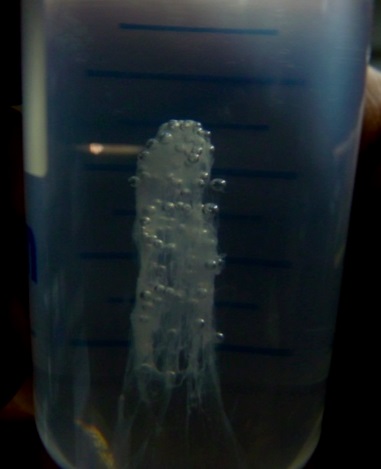
Figure 1. Precipitated mycobacterial DNA (as seen after step 12)
Recipes
- TE buffer
50 mM Tris
5 mM EDTA
Use HCl to adjust pH to 8
- PCI mixture
Tris-saturate phenol to pH 8
Mix Phenol:Chloroform:Isoamyl alcohol in ratio of 25:24:1 volume by volume
References
- Amaro, A., Duarte, E., Amado, A., Ferronha, H. and Botelho, A. (2008). Comparison of three DNA extraction methods for Mycobacterium bovis, Mycobacterium tuberculosis and Mycobacterium avium subsp. avium. Lett Appl Microbiol 47(1): 8-11.
- Kumar, P., John, V., Marathe, S., Das, G. and Bhaskar, S. (2015). Mycobacterium indicus pranii induces dendritic cell activation, survival, and Th1/Th17 polarization potential in a TLR-dependent manner. J Leukoc Biol 97(3): 511-520.
Article Information
Copyright
© 2016 The Authors; exclusive licensee Bio-protocol LLC.
How to cite
Kumar, P., Marathe, S. and Bhaskar, S. (2016). Isolation of Genomic DNA from Mycobacterium Species. Bio-protocol 6(5): e1751. DOI: 10.21769/BioProtoc.1751.
Category
Microbiology > Microbial genetics > DNA > DNA detection and isolation
Do you have any questions about this protocol?
Post your question to gather feedback from the community. We will also invite the authors of this article to respond.
Tips for asking effective questions
+ Description
Write a detailed description. Include all information that will help others answer your question including experimental processes, conditions, and relevant images.
Share
Bluesky
X
Copy link





